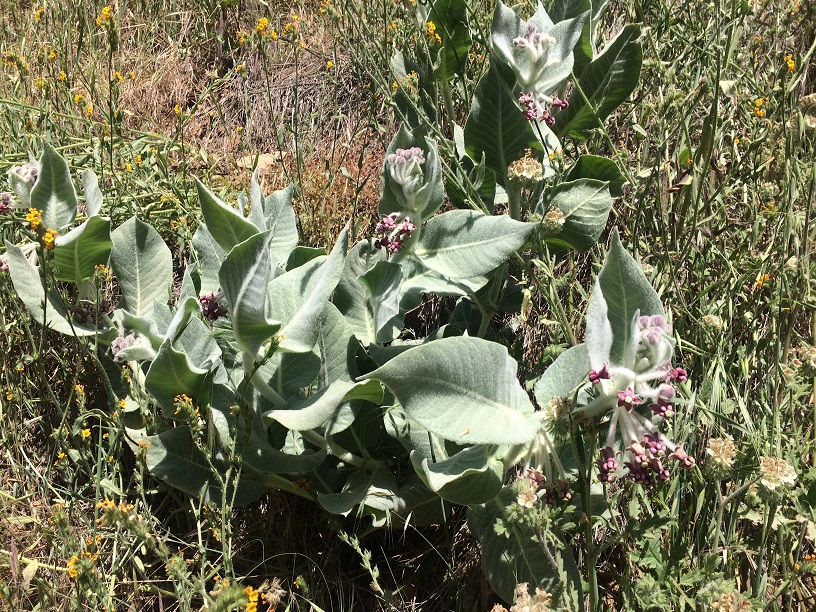

Photo copyright © 2018 Mariposa Native Plants
A native perennial herb, with large clusters of pink or lavender flowers; folded, hairy leaves; and thick stems that spead over the ground. A.californica is late summer or early fall deciduous. Like many other milkweeds, this plant is a host for the monarch butterfly caterpillar.
A.californica is found in diverse, generally dry, environments--hillsides, canyons, arroyos, even along roadways. It is found as far north as the Diablo Range on the east side of San Francisco Bay, down through the coast ranges to southern California, and in the Sierra foothills from Mariposa County south. It is generally confined to California, but does range into far northern Baja California. Elevation: sea level to 8,000 ft. (2500m). Sun: full. Temperature: cold tolerant to 5°F (-15°C). Soil: clay, sandy, or rocky; pH 6-8.
Easy to care for once established. Needs a site that is well-drained. Roots are sensitive to disturbance; avoid breaking the root ball when planting from the container. Water (.5 gallon, 2 liters) once per week until the first winter. Water once per month, same amounts, in the second summer. Thereafter, no supplemental water required.
A.californica is a host plant for the monarch butterfly's caterpillars. Milkweeds, and A.californica among them, contain within them an alkaloid that is mildly poisonous, can actually irritate human skin, and is distasteful to birds and other predators. However, the monarch has adapted to this biochemical characteristic, and the caterpillars feed on the milkweed leaves, absorb the alklaoid, and this renders them quite unpalatable to predators.
Aphids: Young plants especially are subject to aphids. Brush the aphids off gently by hand, with a soft brush, or with a spray of water from the garden hose. Please do not use pesticides on A.californica, because these chemicals harm the monarch butterfly caterpillars. California native plants are adapted to withstand the insect pests, and they really don't need chemical help from you to do so. Also, the aphids are a prime food target for the helpful ladybug insect, so leaving a few of them on the plant confirms an established food and life cycle.
Gophers: We don't know whether these critters attack A.californica; it might be good to be cautious and protect the plants with gopher screens.
Deer: Do not seem to browse A.californica.
Because of its large flowers and robust gray-white foliage, California milkweed is one of the most attractive milkweeds. It is somewhat uncommon in commercial nurseries, however.
In cultivation.